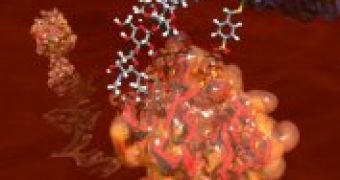The antibodies are blood proteins developed in order to detect and attack germs, like bacteria and viruses.
But in the end, their abilities are limited by the genetic information carried by each one of us.
This limitation could be enhanced by a new research made at the Oxford University. Here, a research team has assembled proteins into 'protein probes' that can be injected into the body and detect infection and disease in different body parts (brain, for example).
The natural antibodies have a structure that matches around parts of a targeted foreign body, attaching to it.
In 1975, researchers have managed for the first time to mimic this biological process, creating the first monoclonal antibodies now commonly employed in vaccines and biotechnology. "We think of antibodies as natural but the ones we use for detection are not always that great at binding to certain structures and in some ways the binding of antibodies to their targets is pretty unrepresentative of other protein-to-protein interactions," said lead-researcher Professor Ben Davis of Oxford's Department of Chemistry.
"Our protein probes, created using chemical rather than biological techniques, are sometimes better at binding with targets than antibodies because they can mimic natural protein partners more closely."
The new synthetic antibodies can attach to proteins on targeted cells, like those in chronic inflammation, marking the tissue.
The synthetic antibodies can be easily detected.
The Oxford team achieved the synthetic antibodies starting with simple chains of amino acids. The amino acids structures were combined with ready-made protein scaffolds, resulting in protein probes developed against specific biological structures.
These protein probes matched much better with their target proteins than monoclonal antibodies did, imitating natural antibodies. 'The strategy behind these probes could be useful for making synthetic proteins in many areas of medicine and science but the real goal behind making these modified protein structures using chemistry is that we hope it could enable us to find clues as to how we have ended up with such complex life forms from surprisingly few genes," said Davis.

 14 DAY TRIAL //
14 DAY TRIAL //